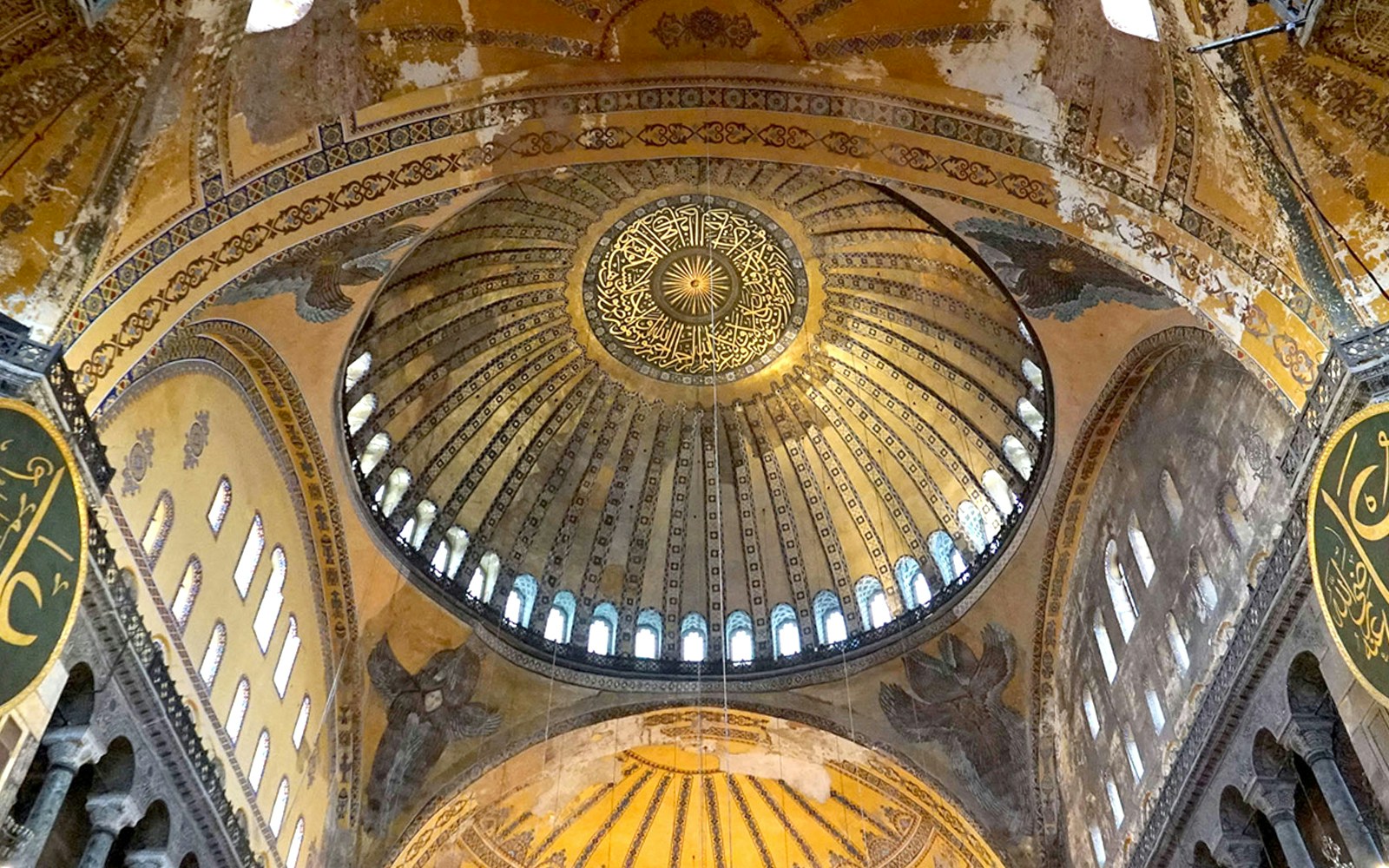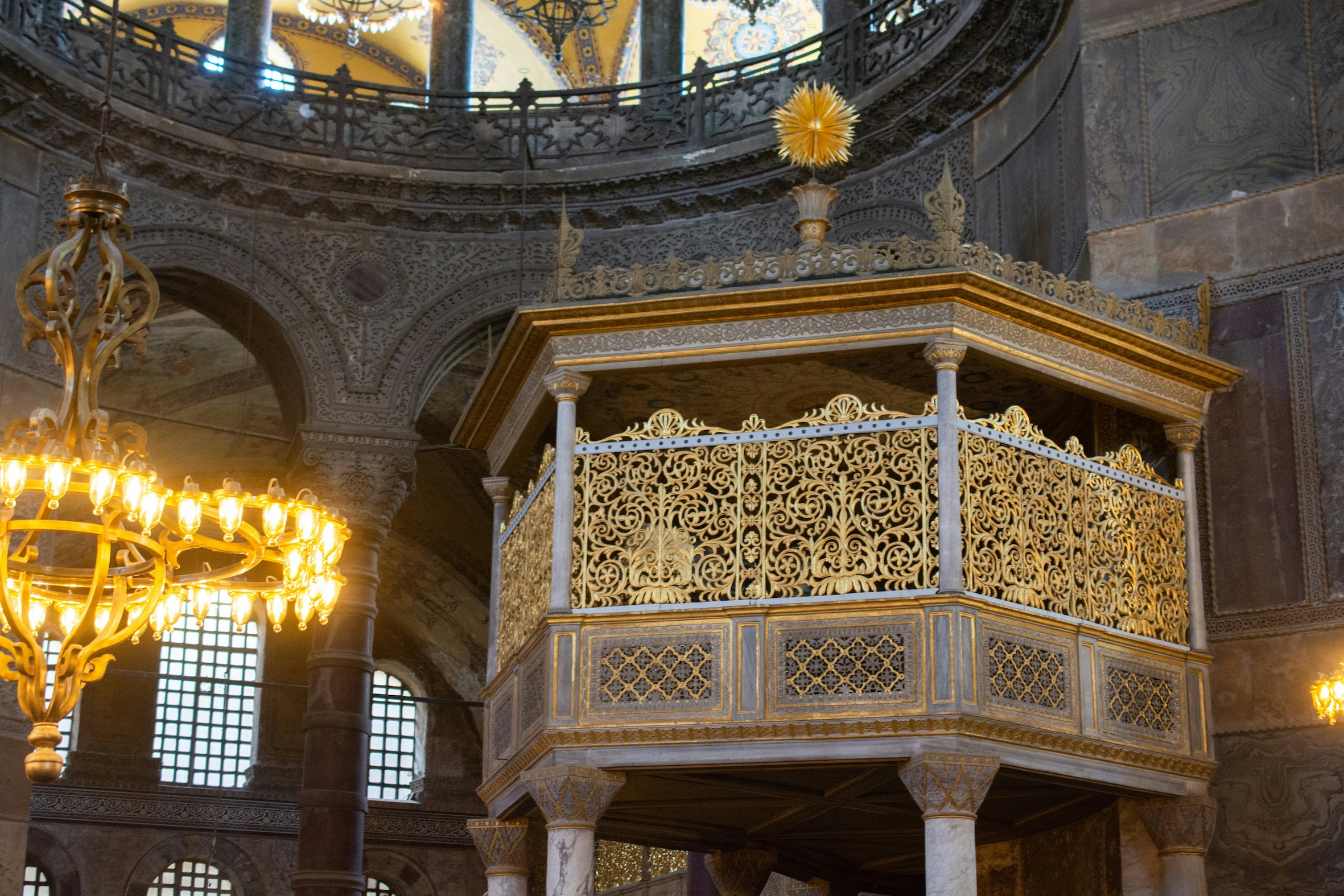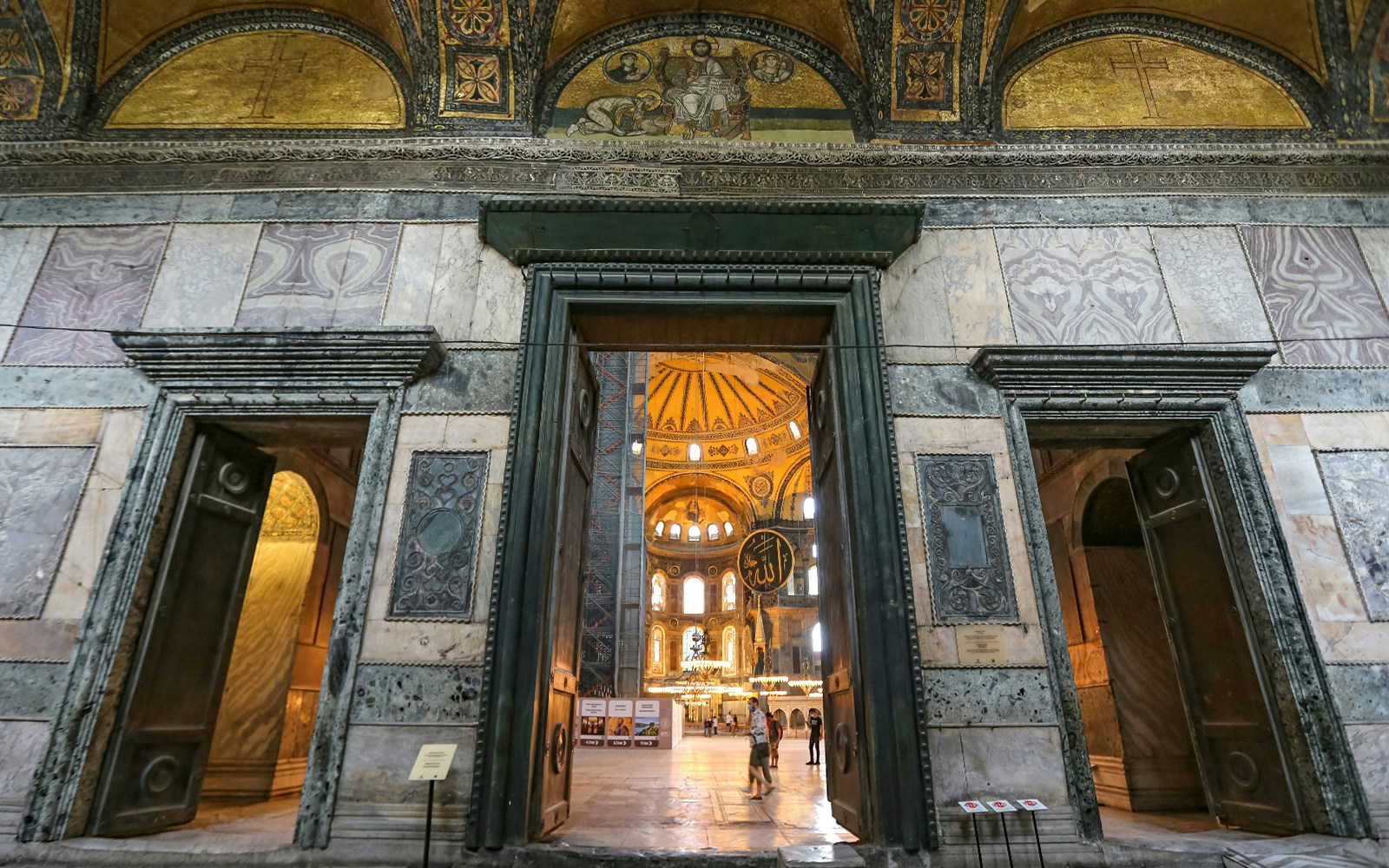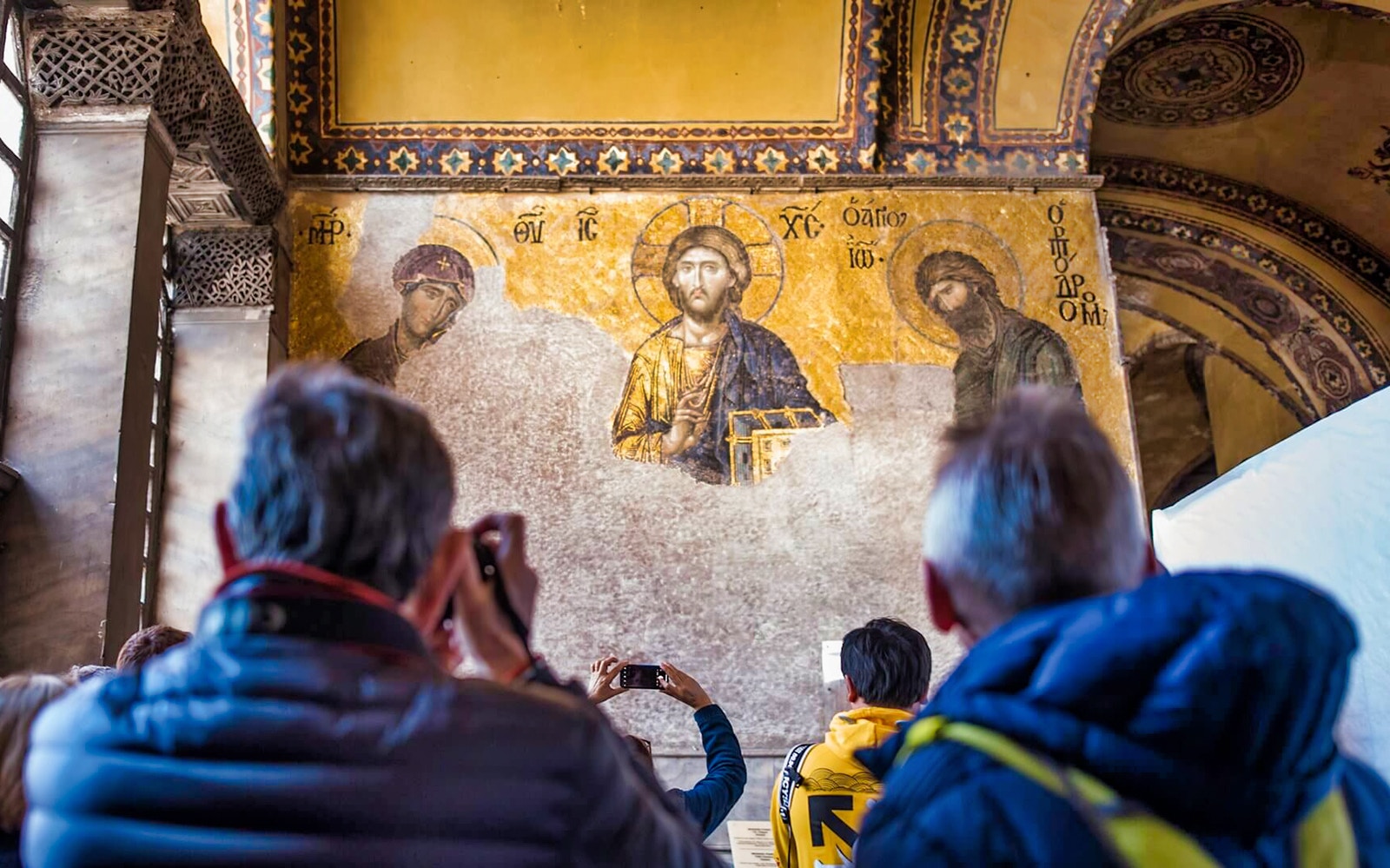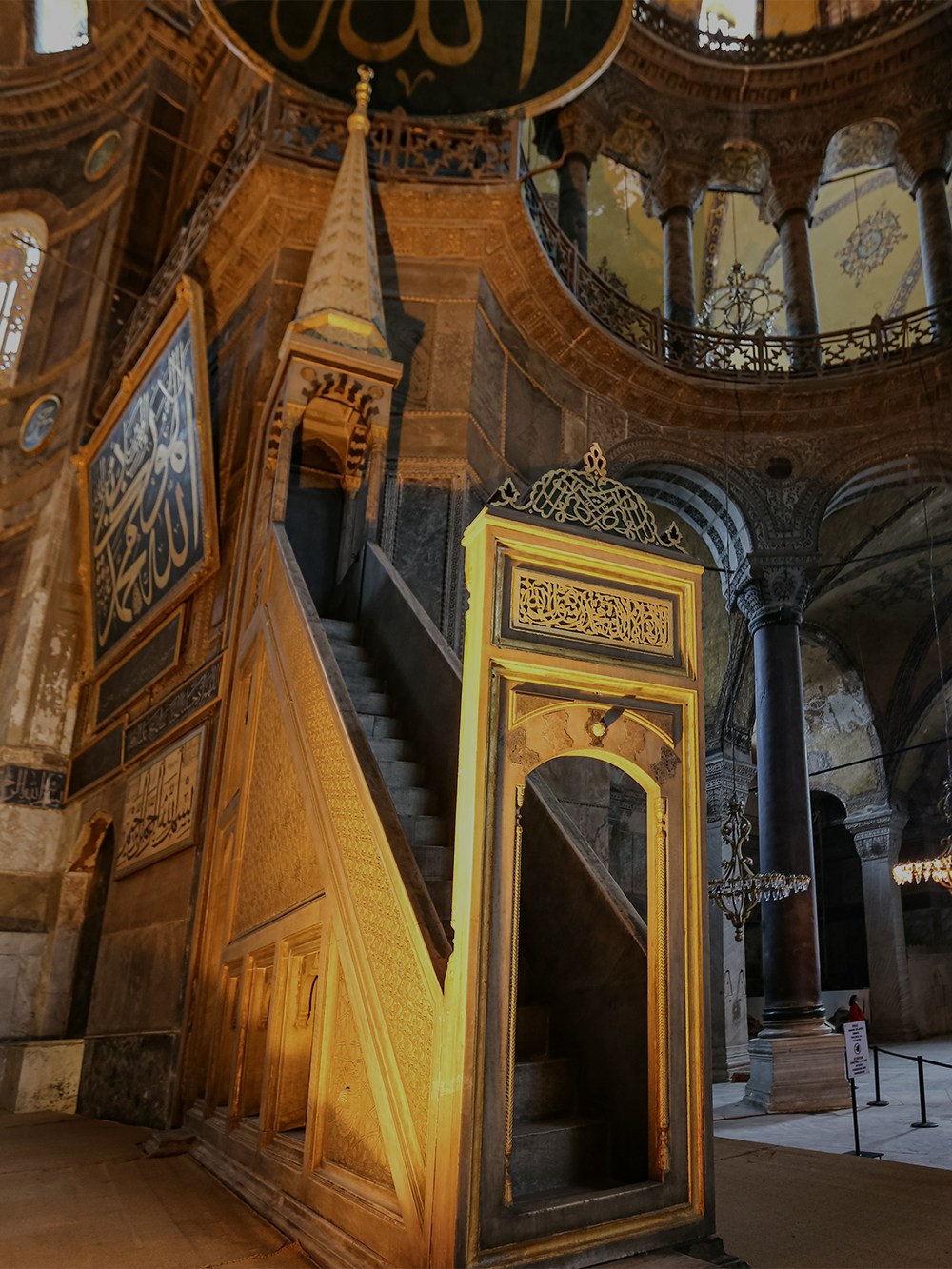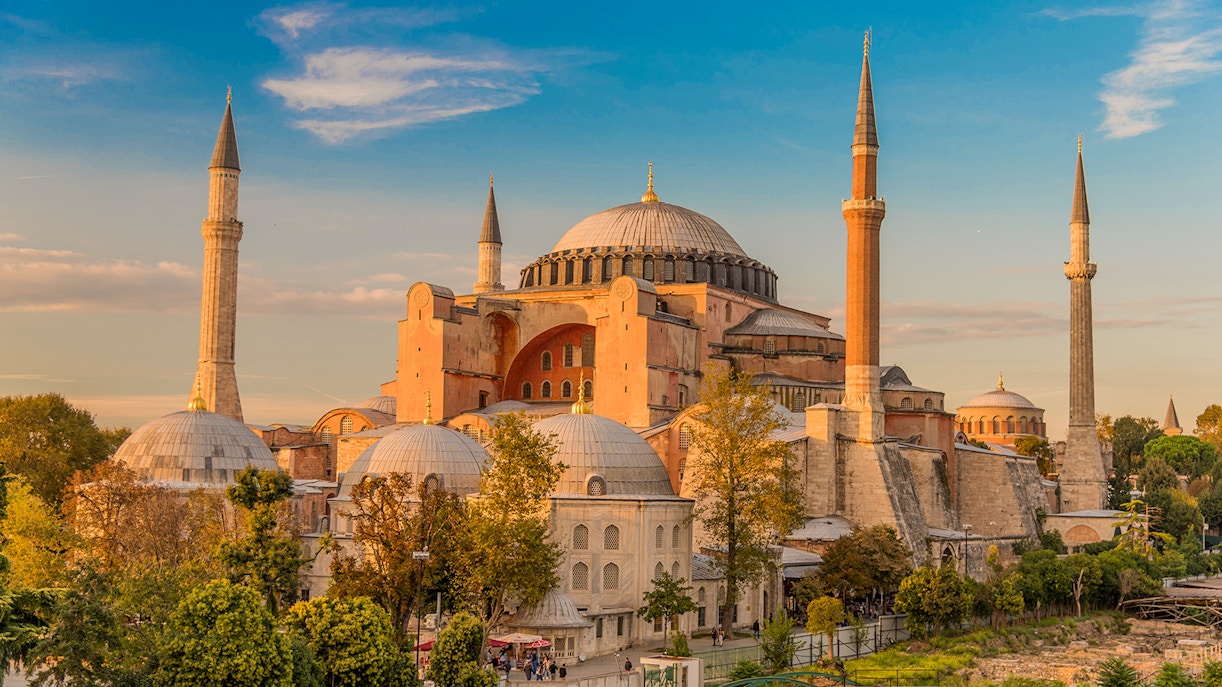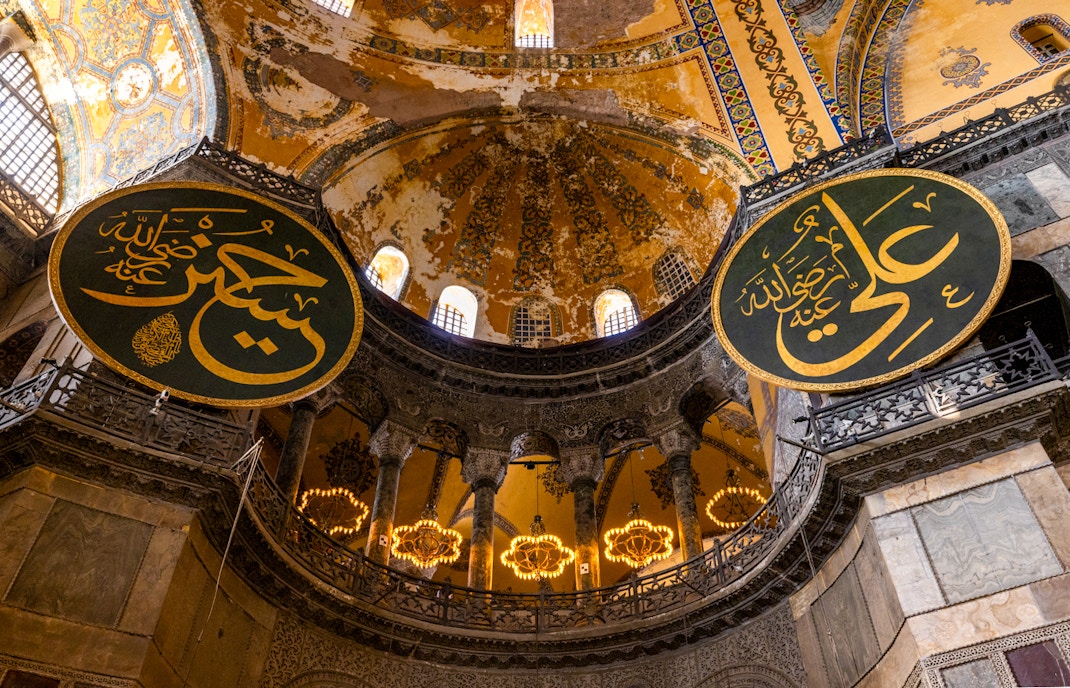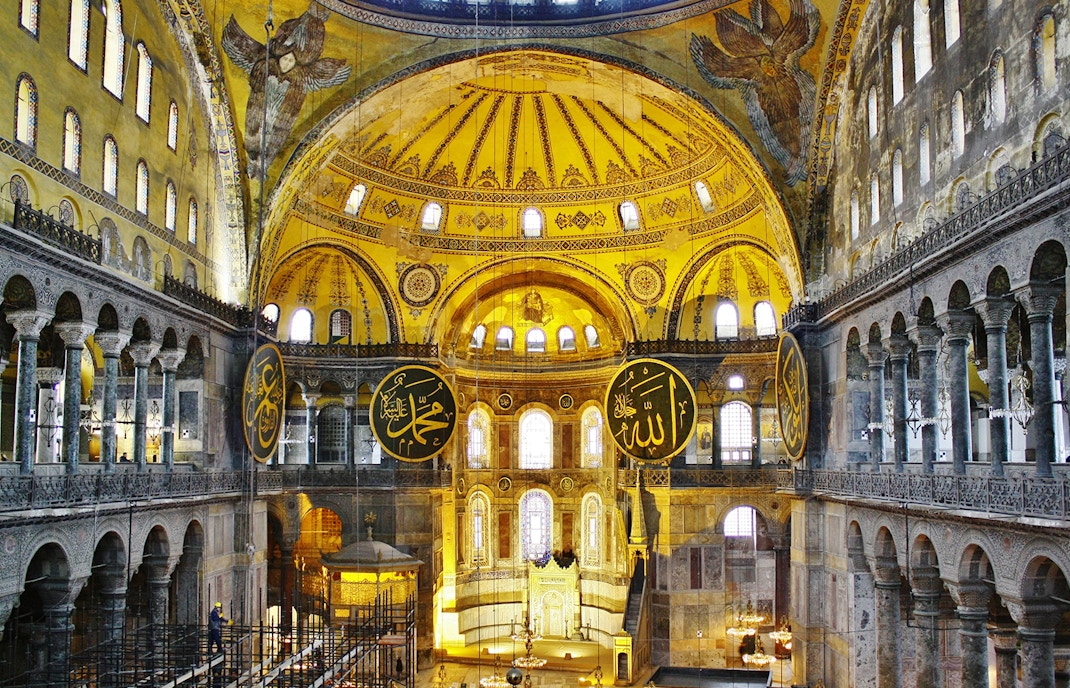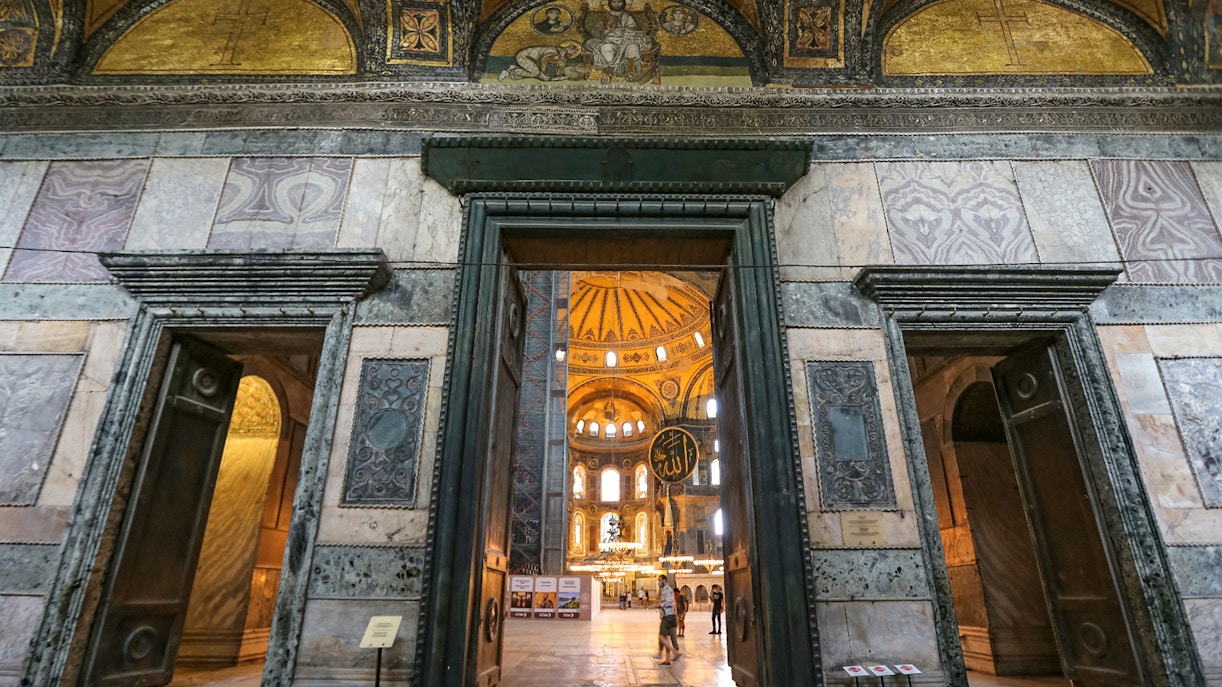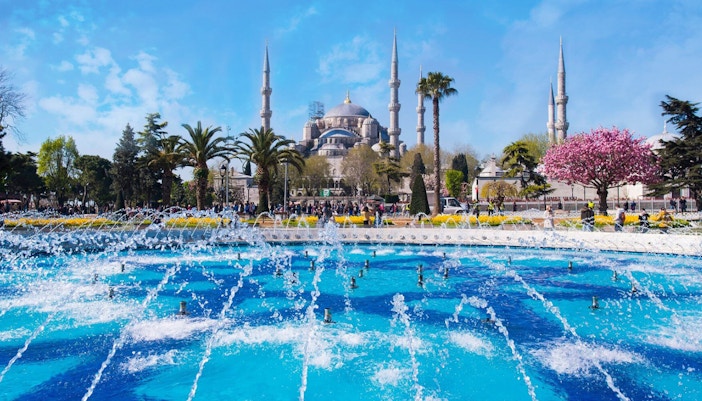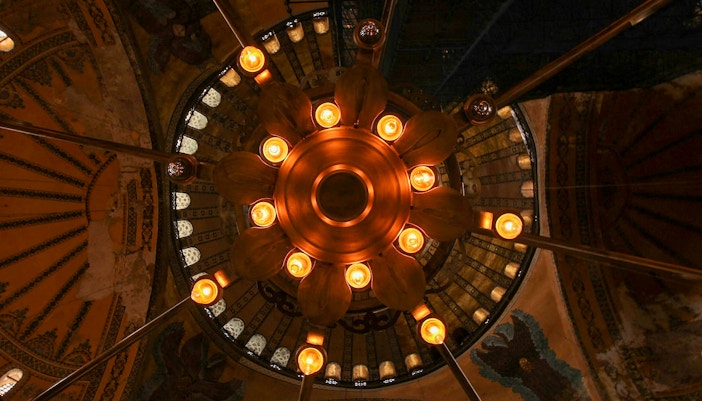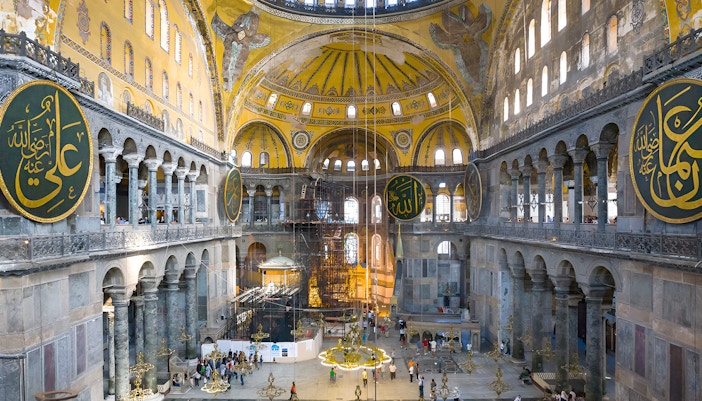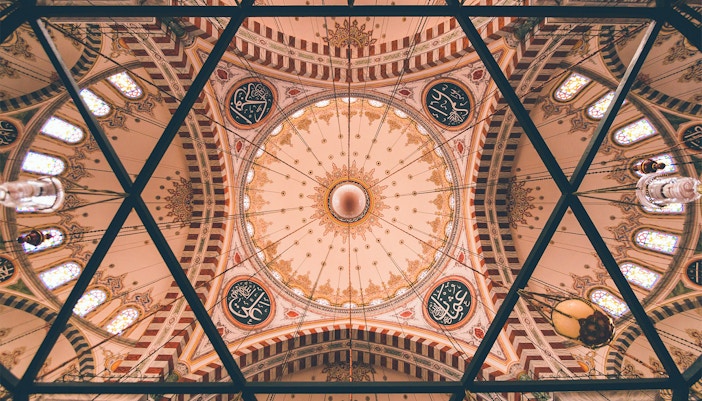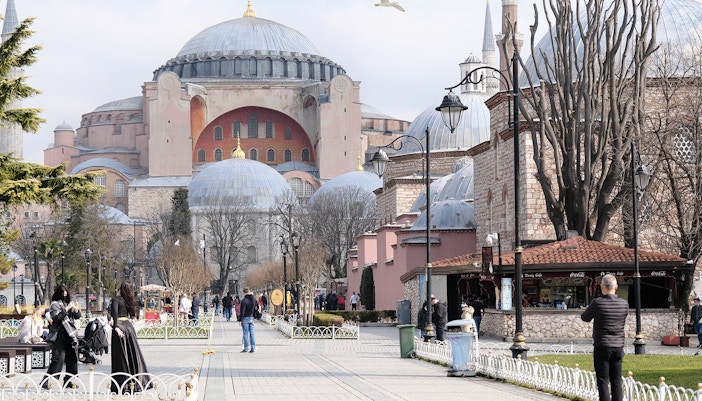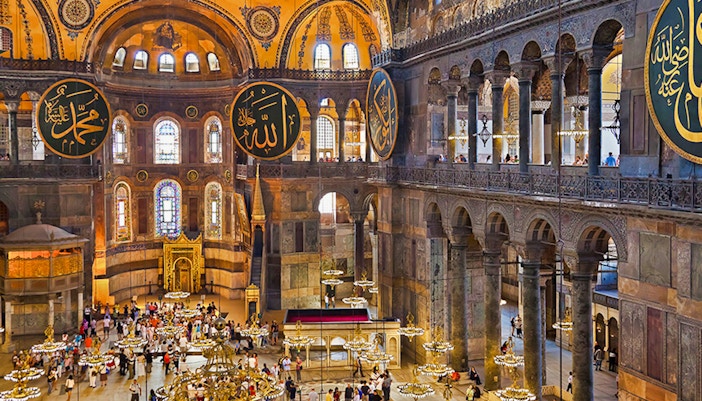The Hagia Sophia is often described as an epitome of Byzantine architecture, but its design incorporates elements from Roman, Greek, and Islamic architectural traditions.
- Byzantine influence: The massive central dome of the Hagia Sophia creates a sense of grandeur and spaciousness within the interior space. The use of pendentives and squinches to support it is another hallmark of Byzantine architecture, allowing for the transition from a square base to a circular dome.
- Roman heritage: The architects of the Hagia Sophia, Anthemius of Tralles and Isidore of Miletus, drew upon their knowledge of Roman engineering techniques to create a structure that was both monumental and functional. The inside of the Hagia Sophia is filled with arches, columns, and vaults.
- Greek aesthetics: The architects used marble and other precious stones and metals to decorate the church-turned-mosque, which is reminiscent of classical Greek architecture. Additionally, the proportions and symmetry of Hagia Sophia's design emphasize harmony and balance.
- Islamic influence: After the Ottoman conquest in 1453, minarets the mihrab (prayer niche), and the minbar (pulpit) were added to the mosque. These features highlight the Hagia Sophia's significance as a place of worship for Muslims.
